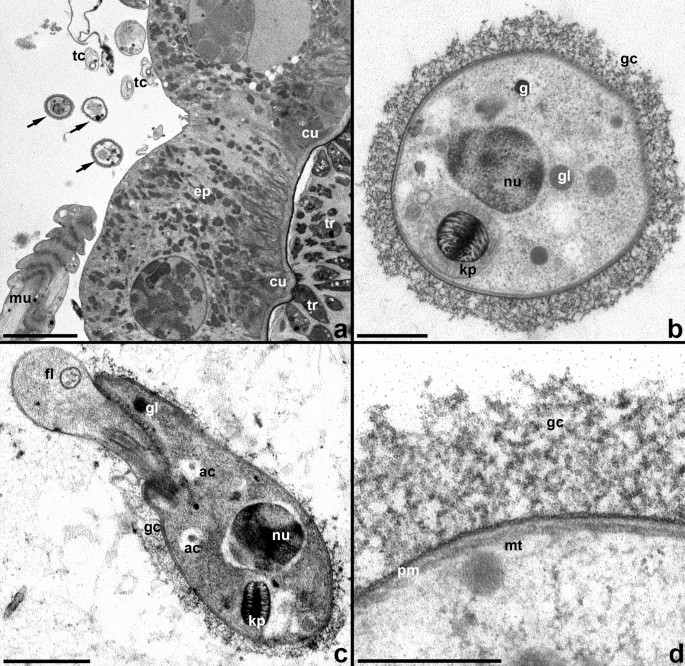Stercorarian trypanosome
Sub genus: Megatrypanum
Trypanosoma theileri
Location and host
- These parasites are usually found in blood of cattle.
Morphology
- This is largest species of genus ‘Trypanosoma’ measuring 60-70 µm in length but forms upto 120 µm in length.
- Undulating membrane is prominent and free flagellum is present.
- Posterior end is long and pointed. Kinetoplast lies some distance from posterior end.
- Both trypomastigote and epimastigote forms occur in blood.

Life cycle
- Vertebrate hosts get infection when vector flies deposits faeces containing parasite on mucous membrane
- Small metacyclic trypanosomes changes into trypomastigote
- Trypomastigote then changes into epimastigote form.
- Epimastigote forms multiplies by longitudinal binary fission of epimastigote in lymph nodes
- Trypanosomes then develop into small metacyclic trypomastigote form in hind gut of flies.

Pathogenesis
- Ordinarily non-pathogenic but under condition of stress, it may cause severe disease and even death.
- Also, associated with ‘turning sickness’. This shows depressed milk production and abortion in cattle.
- This parasite has caused losses in cattle being immunized against rinderpest and other disease.
Clinical signs
- Infections are usually asymptomatic
Diagnosis
- BY incubating blood in culture medium in NNN ( Novy-macNeal-Nicolle) and other media.
- PM examination reveals yellow discoloration of tissues, enlargement of sub cutaneous L.N, congestion of liver and sero-sanguineous fluid in pericardial sac.
Treatment and control
- Not required usually
- Use of fly repellant to control flies or use of insecticide to control flies population.